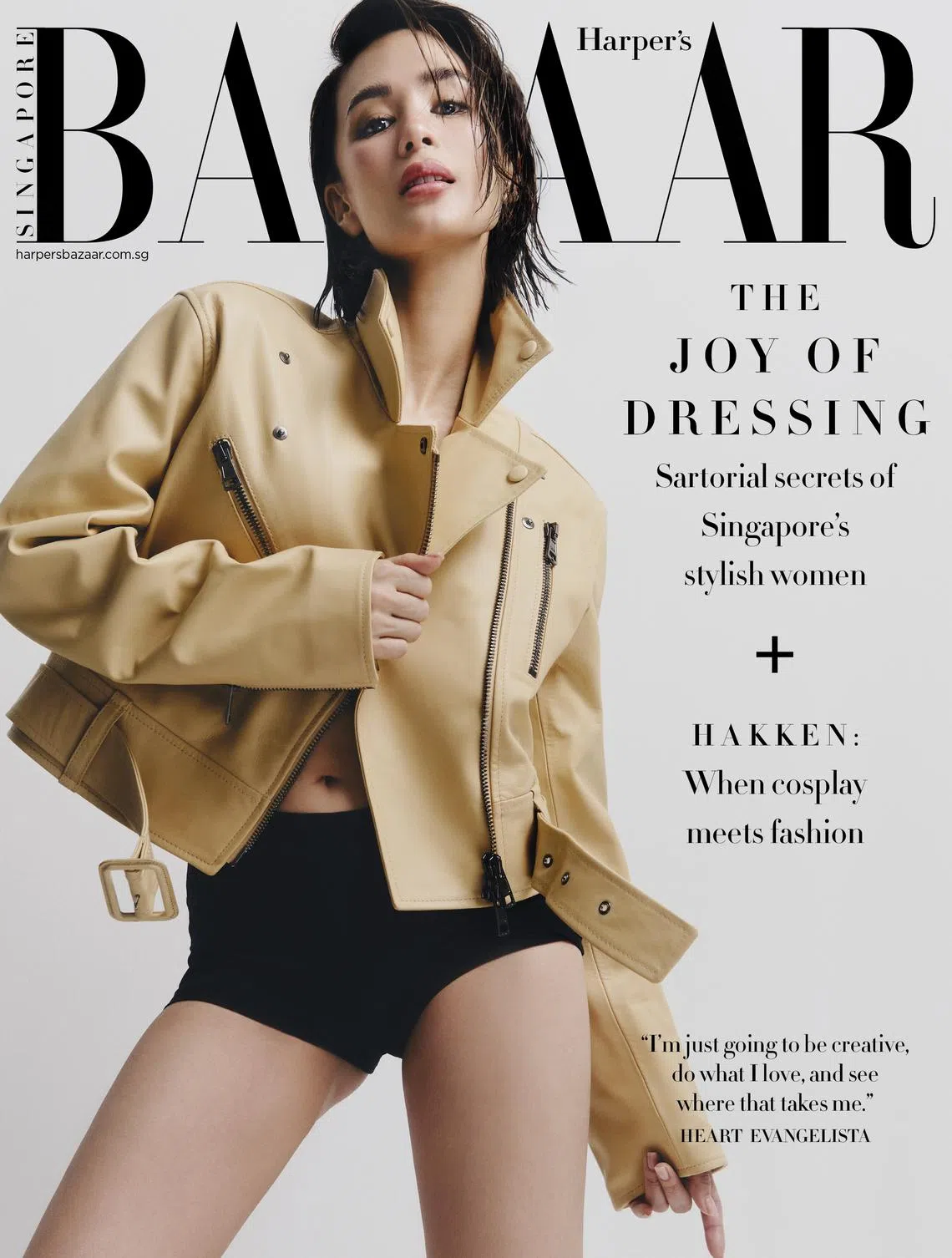Suits go either minimalist or subversive
Sign up now: Get ST's newsletters delivered to your inbox
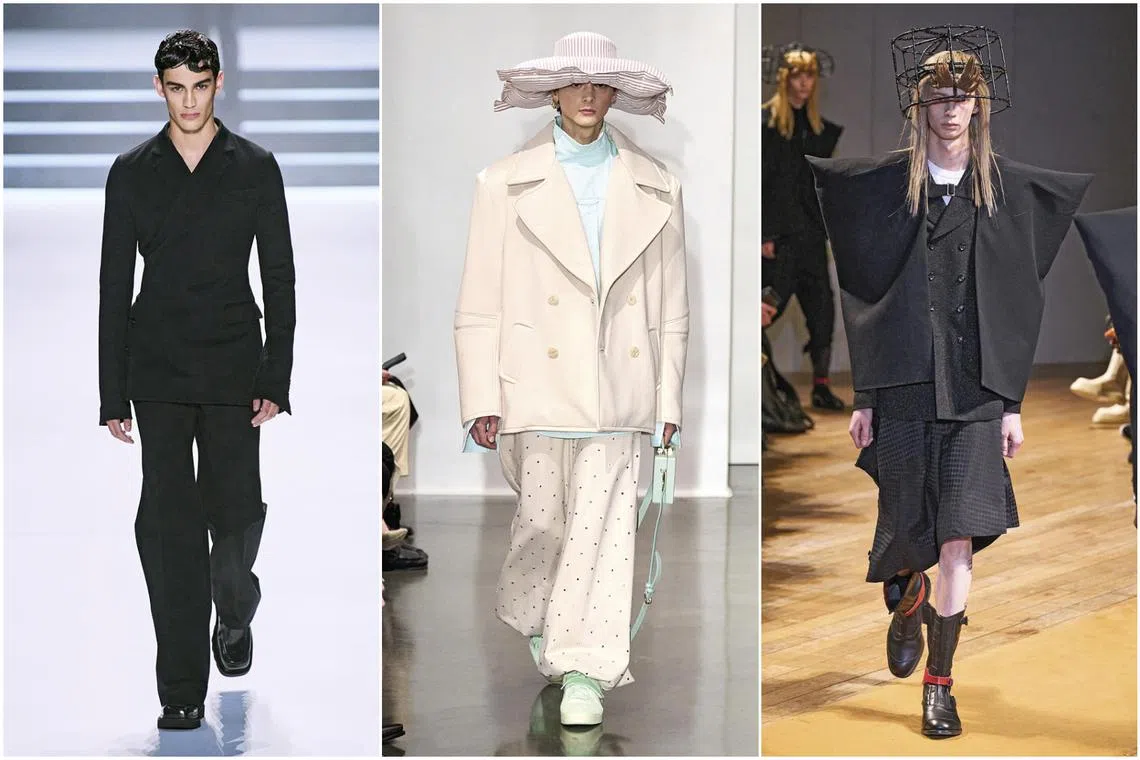
The tailored two-piece remains the most alluring option for men for evening dressing that is effortless yet impactful.
PHOTOS: SHOWBIT
Jeffrey Yan
Follow topic:
This article first appeared in Harper’s Bazaar Singapore, the leading fashion glossy on the best of style, beauty, design, travel and the arts. Go to harpersbazaar.com.sg @harpersbazaarsg harpersbazaarsingapore
SINGAPORE – The tailored two-piece remains the most alluring option for men for evening dressing that is effortless yet impactful. But this season, its proponents fall into two distinct camps.
The Minimalists
This set of designers set out to distil the suit down to its essence.
No superfluous details, no grand reinventions – in their hands, the suit is all about the purity and precision of the cut, the relationship between cloth and body, and a showcase for the superiority of their tailoring ateliers.
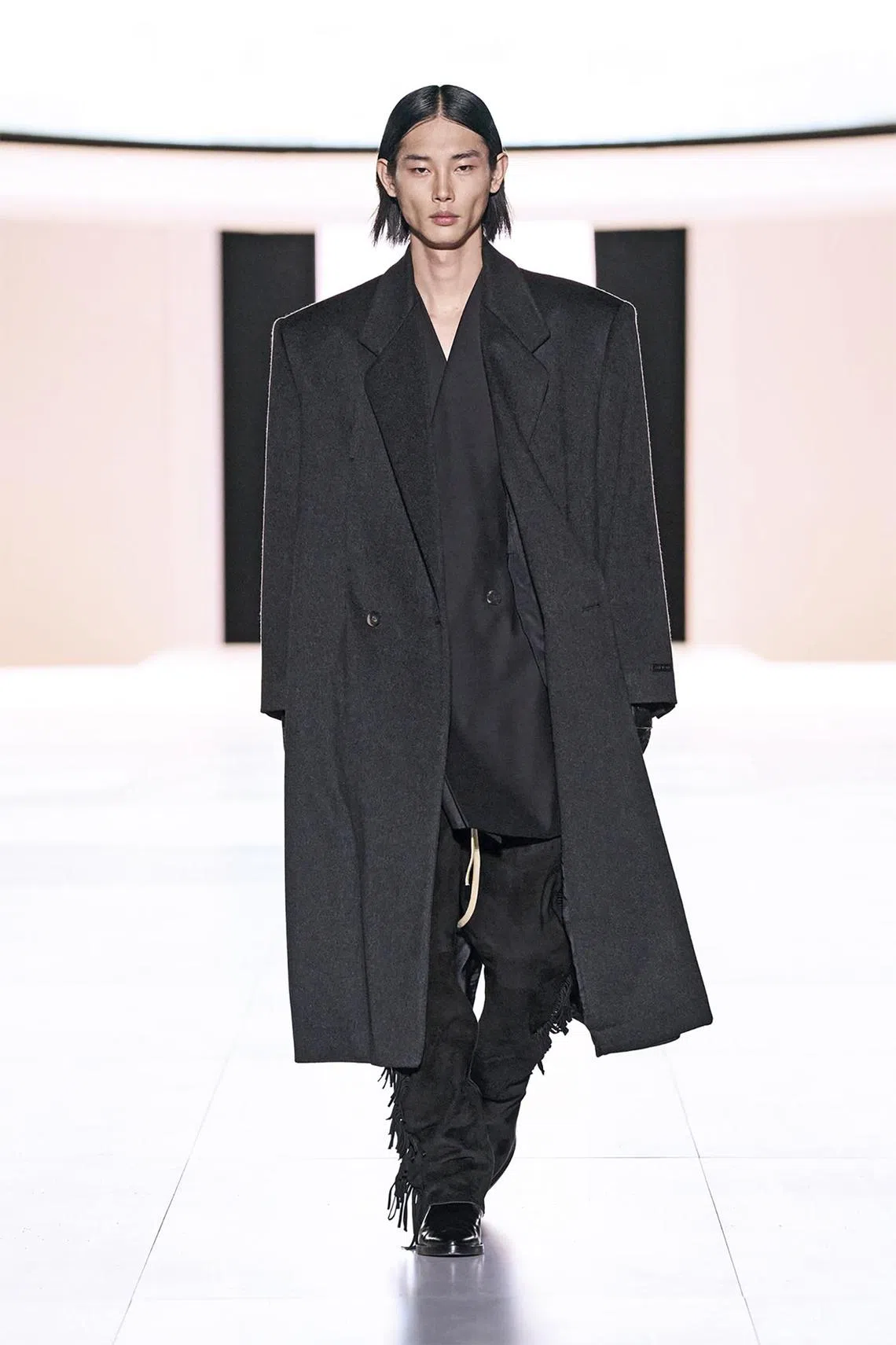
No superfluous details, no grand reinventions – in their hands, the suit is all about the purity and precision of the cut.
PHOTO: SHOWBIT
Demna’s big Redemption collection for Balenciaga was stripped of theatrics in both clothing and staging. Instead, he opened with a series of suits that emphasised his skill with the scissors.
The final look at the Gucci Cruise show – literally the last runway look by the studio team before Sabato de Sarno’s debut – was a palate cleanser of a boxy black suit.
Sarah Burton’s penultimate collection for Alexander McQueen was all razor-sharp, surgical-precise lines – a nod to McQueen’s Savile Row beginnings.
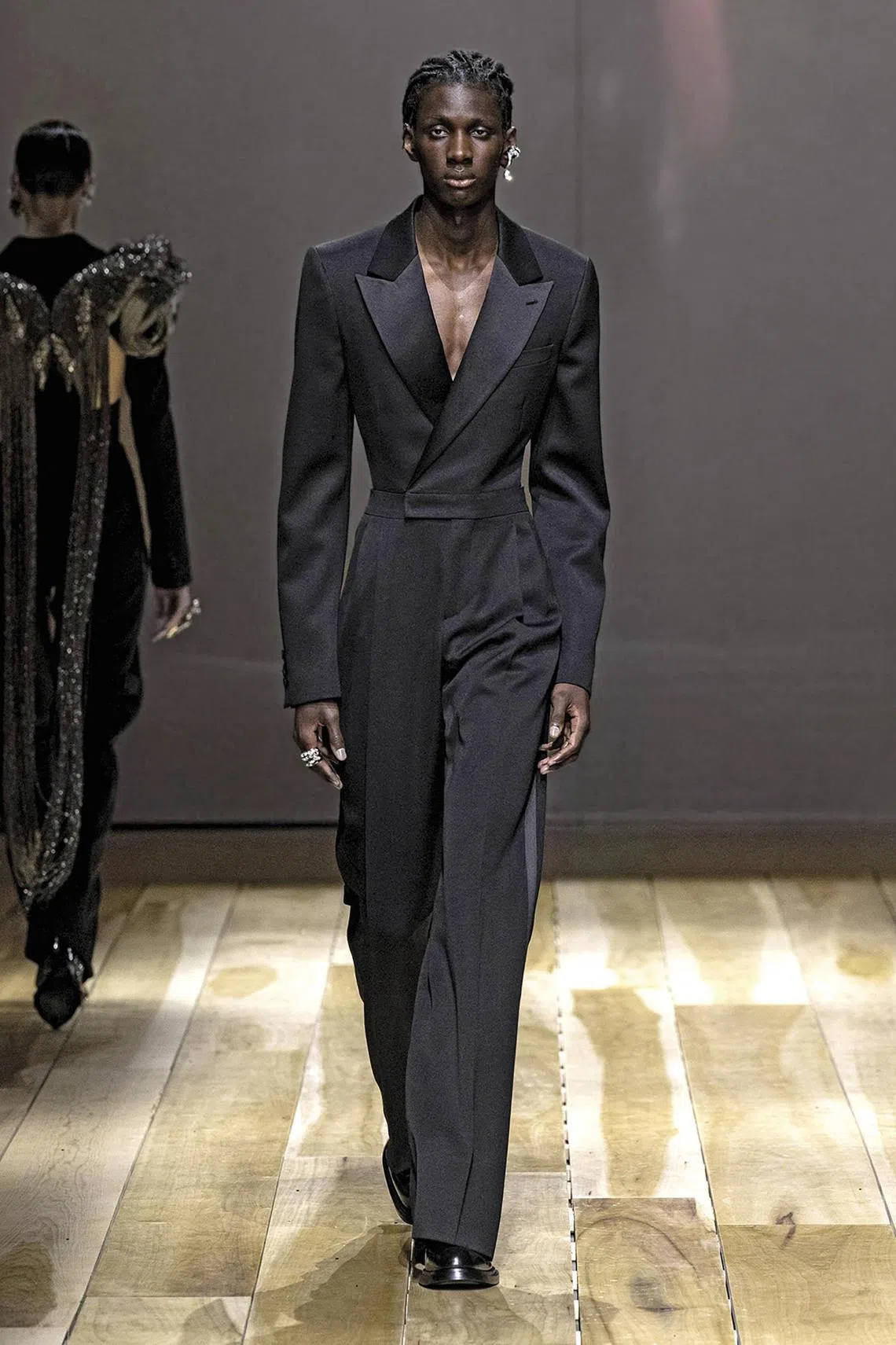
Sarah Burton’s penultimate collection for Alexander McQueen was all razor-sharp, surgical-precise lines – a nod to McQueen’s Savile Row beginnings.
PHOTO: SHOWBIT
Other designers, too, nodded at their houses’ heritage.
Anthony Vaccarello built a new and imposing menswear silhouette using Yves Saint Laurent’s juxtaposition of delicate and sharp tailoring; while Matthew Williams referenced Hubert de Givenchy’s couture construction for his sculpted suits.
The Non-conformists
This camp sees the suit as a symbol of tradition to be subverted. To them, it is a blank canvas, a starting point from which they can project fantasy, emotion, decoration and drama.
Japanese mavericks, such as Rei Kawakubo of Comme des Garcons and Yohji Yamamoto, do it best – using the familiar to fashion the avant garde.
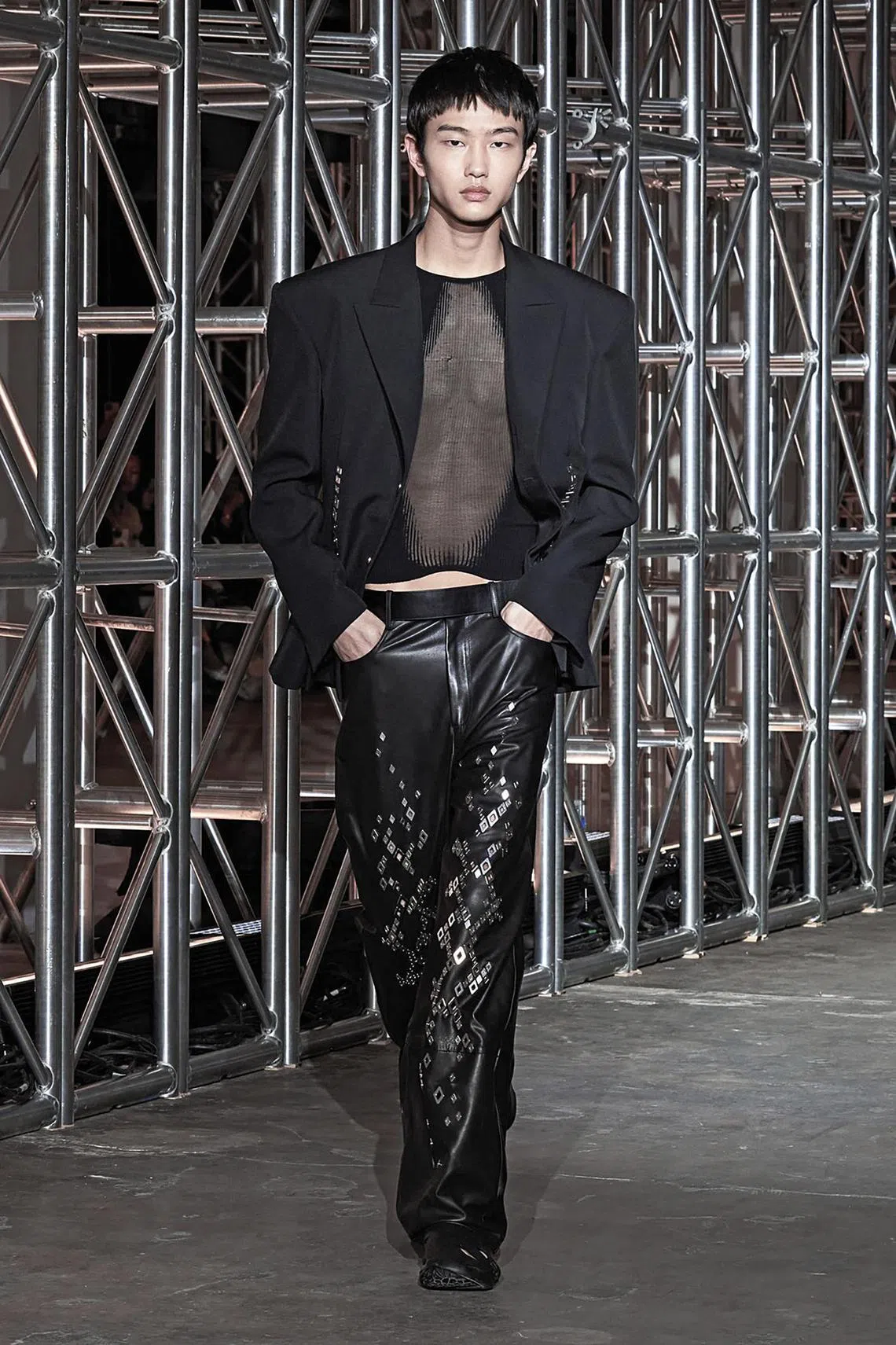
Japanese mavericks, such as Rei Kawakubo of Comme des Garcons and Yohji Yamamoto, do it best – using the familiar to fashion the avant garde.
PHOTO: SHOWBIT
At Valentino, Pierpaolo Piccioli’s starting point was the skinny black tie, but he transformed the context around it with punkish leathers and hot pants for men.
At Off-White, Ibrahim Kamara’s take on the suit was at once futuristic and Afro-centric.
Simone Rocha, now that she has expanded into menswear, found the suit to be the perfect vehicle for her exploration of power and fragility.
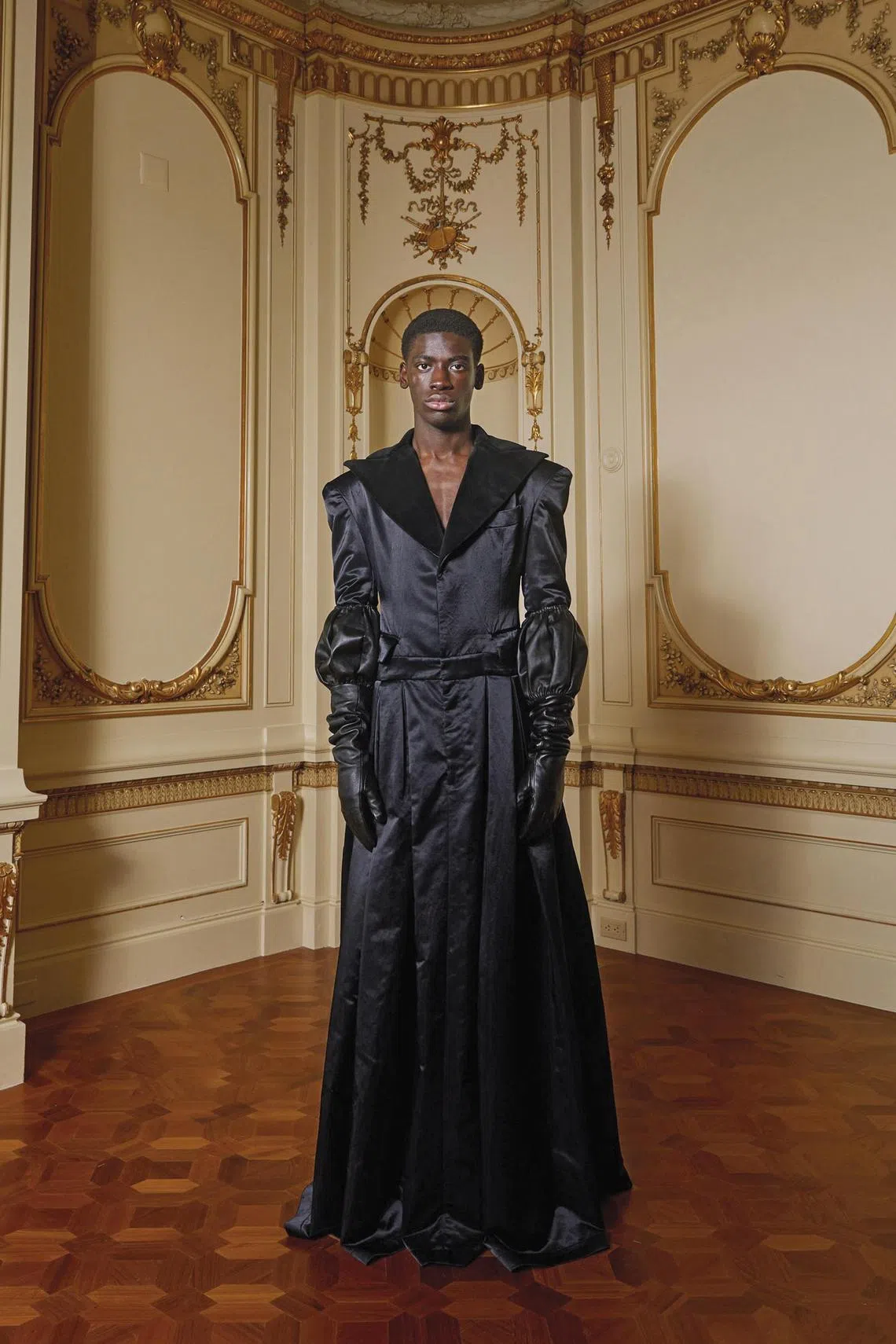
Designers such as Willy Chavarria imbued the suit with a distinctly queer sensibility.
PHOTO: SHOWBIT
Jacquemus’ ode to Marie Antoinette and Princess Diana yielded his most directional menswear yet.
Meanwhile, designers such as Willy Chavarria and Alejandro Gomez Palomo of Palomo Spain imbued the suit – for so long a signifier of conventional masculinity – with a distinctly queer sensibility.
